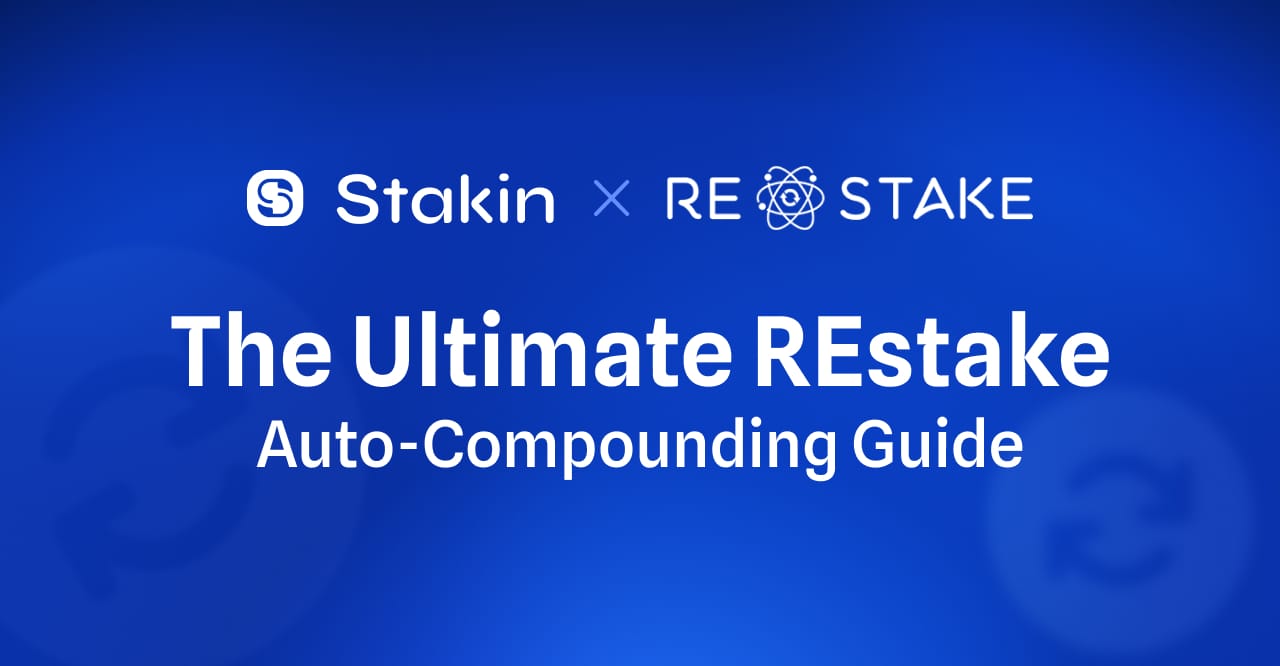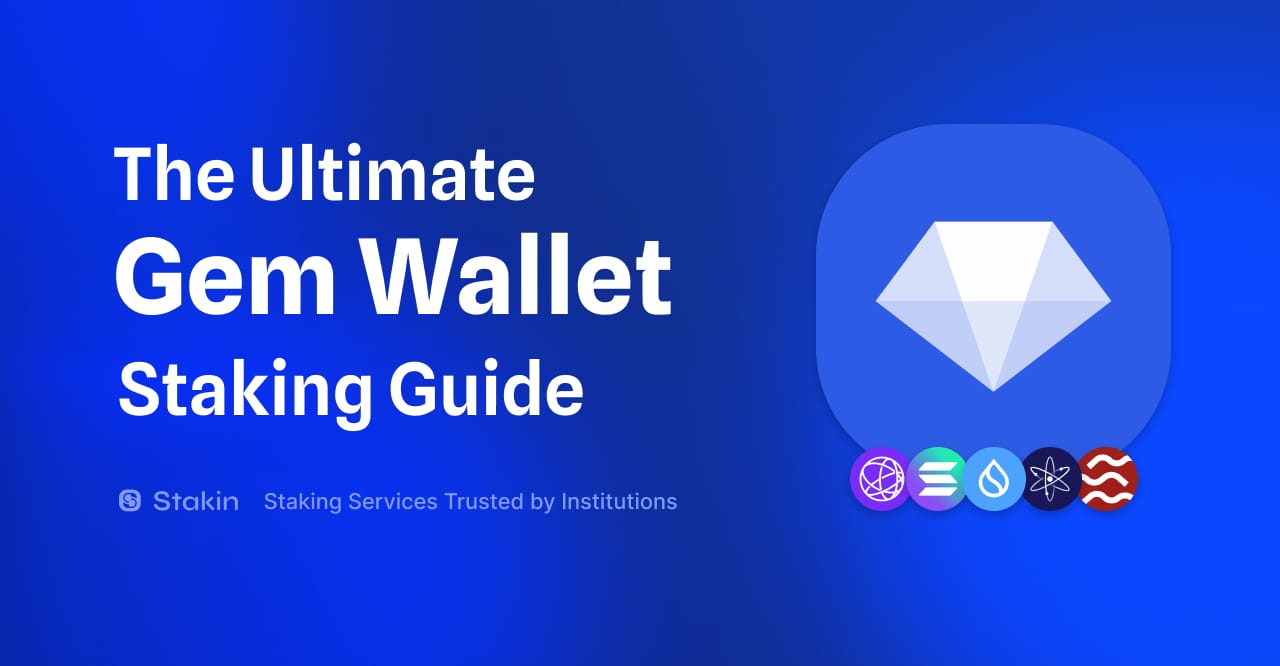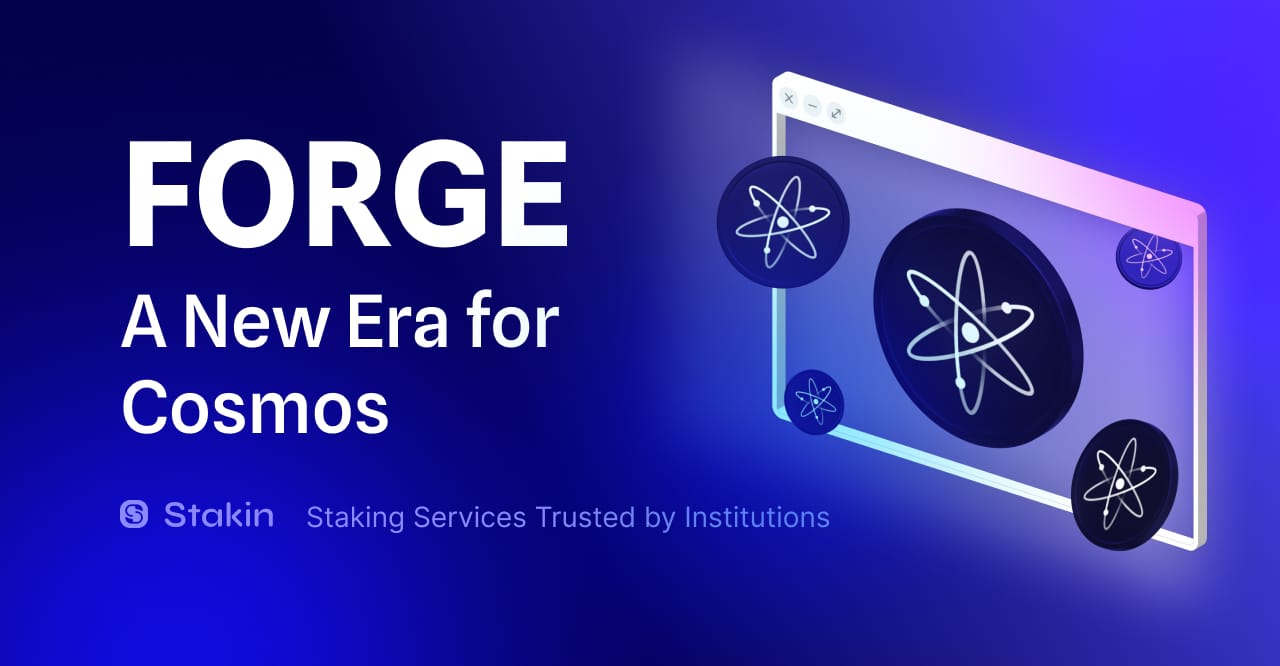Fragmentation in the blockchain space is - and historically has been - an impediment to growth in this emerging space. Siloed networks create barriers to scalability and interoperability that need to be overcome if blockchain technology is to reach its true game-changing promise. To deny this simple fact is to deny blockchain’s game-changing promise itself.
Cosmos’ aim: to connect the siloed/fragmented blockchain space, creating an interoperable network where blockchains can maintain their sovereignty while interacting seamlessly. At the core of this vision lies the Inter-Blockchain Communication (IBC) protocol. IBC acts as the digital bridge that allows for secure, trustless exchanges among the disparate networks that comprise the larger blockchain ecosystem.
Launched alongside the Stargate upgrade in February 2021, IBC has been a cornerstone in Cosmos’ journey toward achieving this vision. However, this journey towards true interoperability has not been without its challenges. Complexity in implementation, suboptimal transaction speeds, and limited adoption have posed hurdles that those working to realize IBC’s potential have needed to contend with.
Enter the Eureka Upgrade - a conceptual re-imagining of how blockchains should communicate, designed to supercharge IBC. Currently in development by teams including Interchain Labs - a part of the Interchain Foundation, and scheduled for release towards the end of Q1 (as part of ibc-go v10), Eureka aims to make Cosmos’ vision of an interconnected blockchain ecosystem more tangible, more accessible, and more efficient.
Understanding IBC - Inter-Blockchain Communication
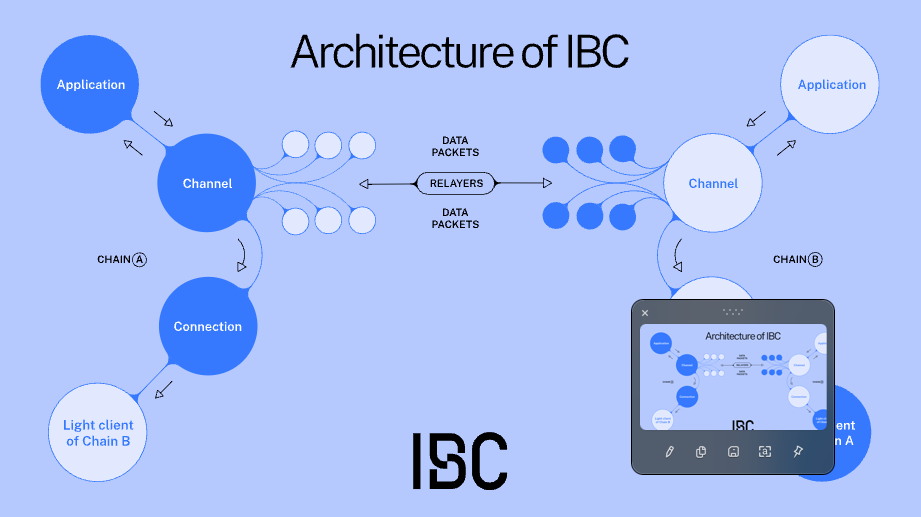
Inter Blockchain Communication (IBC) is essentially a standardized protocol that allows blockchains to communicate with each other in a secure and verifiable manner. Imagine it as a universal language for blockchains, enabling them to share information, assets, and even governance signals without needing to trust each other explicitly. Here's how it fundamentally operates:
- Clients: Each participating blockchain in the Cosmos ecosystem runs a light client for its peers. This light client verifies the state of another blockchain without needing to replicate all its data, ensuring that actions on one chain are recognized as valid by another.
- Connections: These are secure, established links between two blockchains formed after mutual verification of their states through these light clients.
- Channels: Once connected, channels are created for specific purposes, like transferring tokens or sharing data. Channels are unidirectional but can be paired for bidirectional communication.
- Packets: Information or assets to be transferred are encapsulated in packets. These include a sequence number to ensure the correct order of transactions, source and destination identifiers, and the actual data or asset being sent.
- Relayers: Independent entities or nodes that listen for packets on one blockchain and relay them to another, playing a crucial role in maintaining the flow of data or assets across the network.
The security of IBC is rooted in the consensus mechanisms of the individual blockchains it connects. It operates without intermediaries, relying on cryptographic proofs for trust, thereby maintaining the decentralized nature of each connected chain.
Since its debut, IBC has facilitated the connection of over 100 chains, enabling various applications from straightforward asset transfers to sophisticated DeFi protocols where liquidity can be pooled across different chains.
Inter-Blockchain Communication (IBC) is essentially a standardized protocol that allows blockchains to communicate with each other in a secure and verifiable manner. Imagine it as a universal language for blockchains, enabling them to share information, assets, and even governance signals without needing to trust each other explicitly. Here's how it fundamentally operates:
- Clients: Each participating blockchain in the Cosmos ecosystem runs a light client for its peers. This light client verifies the state of another blockchain without needing to replicate all its data, ensuring that actions on one chain are recognized as valid by another.
- Connections: These are secure, established links between two blockchains, formed after mutual verification of their states through these light clients.
- Channels: Once connected, channels are created for specific purposes, like transferring tokens or sharing data. Channels are unidirectional but can be paired for bidirectional communication.
- Packets: Information or assets to be transferred are encapsulated in packets. These include a sequence number to ensure the correct order of transactions, source and destination identifiers, and the actual data or asset being sent.
- Relayers: Independent entities or nodes that listen for packets on one blockchain and relay them to another, playing a crucial role in maintaining the flow of data or assets across the network.
The security of IBC is rooted in the consensus mechanisms of the individual blockchains it connects. It operates without intermediaries, relying on cryptographic proofs for trust, thereby maintaining the decentralized nature of each connected chain.
Since its debut, IBC has facilitated the connection of over 100 chains, enabling various applications from straightforward asset transfers to sophisticated DeFi protocols where liquidity can be pooled across different chains.
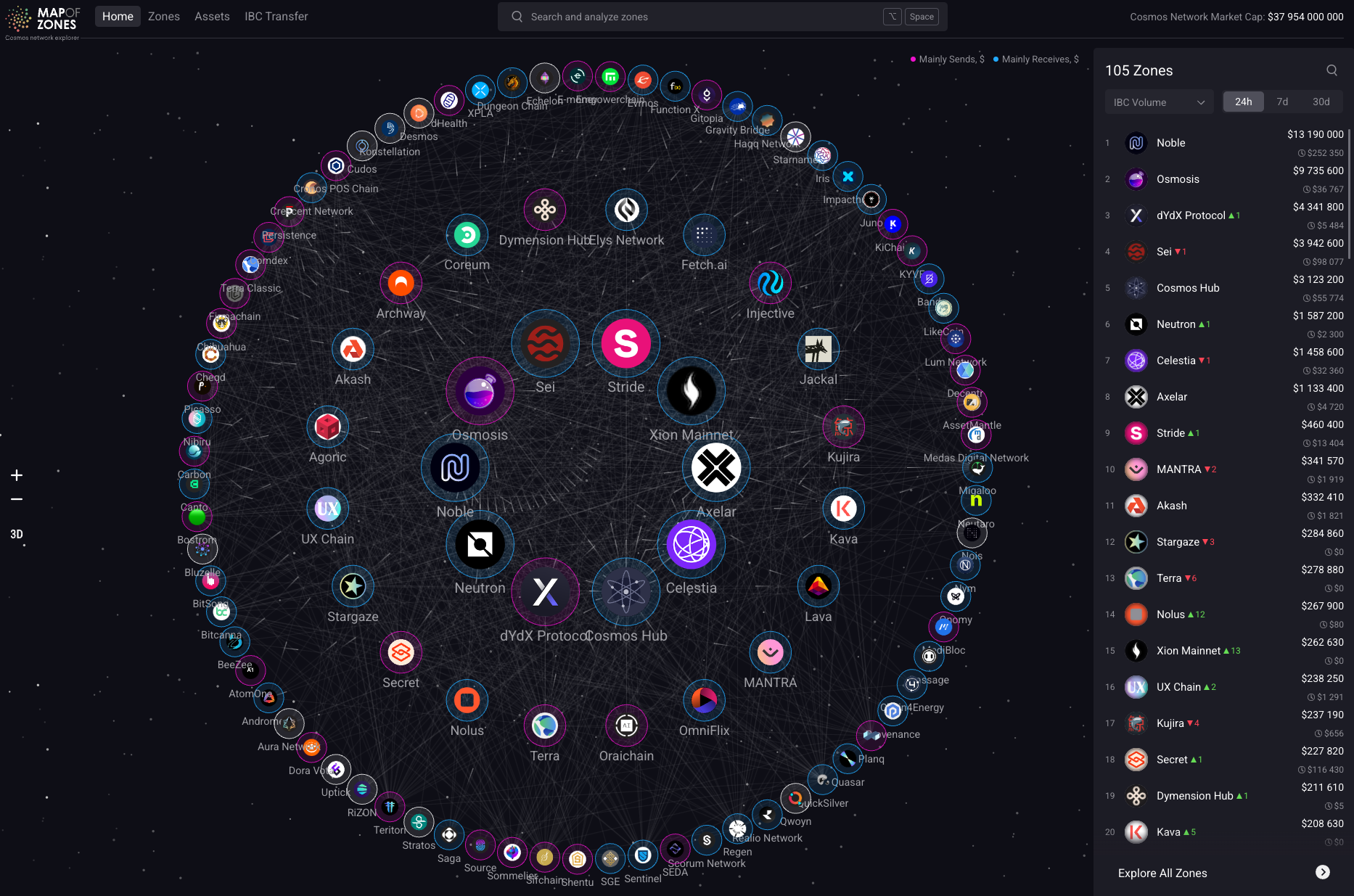
The Eureka Upgrade - A Technical Leap Forward
The Eureka Upgrade represents Cosmos’ latest endeavor to push the boundaries of the IBC Protocol’s capabilities. Eureka isn't just about making things faster or simpler; it's about redefining the very nature of interchain interactions.
This upgrade seeks to simplify IBC, making it easier to understand and implement. Doing so opens the door to more participants - from developers to new blockchain projects - to join the Cosmos ecosystem without the steep learning curve previously associated with IBC.
Performance is another critical focal point of Eureka. By optimizing how packets are relayed and processed, transactions could become nearly instantaneous, which would mean a significant leap from today's standards. Light clients would see improvements as well, with algorithms designed to require less data for state verification, speeding up the process further.
Security enhancements include stronger packet authentication to ensure data integrity during transfer and better timeout mechanisms to address network delays gracefully.
Eureka also formalizes and enhances middleware for IBC, which essentially allows developers to extend IBC's functionality without touching its core protocol. This modular approach means that as new use cases emerge, IBC can evolve to support them without complex overhauls.
Benefits of the Eureka Upgrade
- Enhanced Interoperability: With simplicity and speed, Eureka will make the integration of new chains and services into the Cosmos network more seamless, fostering an environment where interoperability is not just possible but intuitive.
- Developer Friendliness: By lowering the technical barriers, Eureka encourages more developers to experiment with and build upon IBC, potentially leading to a surge in innovative applications.
- Economic Impact: Faster transactions with lower costs will likely enhance the economic vitality of the Cosmos ecosystem, making it more attractive for both users and businesses.
Impact on the Cosmos Ecosystem
Eureka could be the catalyst for a broader adoption of IBC, possibly outside the Cosmos ecosystem, setting a new standard for how blockchains should interact. This could lead to an explosion in cross-chain applications, particularly in the DeFi arena - where the ability to move assets fluidly across chains could lead to more sophisticated financial products.
The Eureka upgrade also holds the promise of making governance in the Cosmos network more inclusive. As more participants understand and engage with IBC, they're more likely to participate in governance decisions, shaping the future direction of the Cosmos ecosystem.
Final Thoughts
The Eureka Upgrade for IBC is more than just an upgrade; it's a key facet of Cosmos’ vision of a future where blockchain networks are not isolated fortresses but parts of a vibrant, collaborative digital landscape. While challenges like ensuring continued security, managing scalability, and fostering a diverse developer community remain, the potential for Eureka and the accelerated innovation of IBC and blockchain interoperability is clear.
For those watching or involved in the blockchain space, the evolution of IBC through Eureka presents both an opportunity to engage with cutting-edge technology and a chance to be part of a movement that could fundamentally change how we think about and use blockchains. As we move forward, the ongoing evolution of Cosmos, Eureka, and IBC will most certainly be an important development to watch.
DISCLAIMER: This is not financial advice. Staking and cryptocurrency investment involve a certain degree of risk, and there is always the possibility of loss, including the loss of all staked digital assets. Additionally, delegators are at risk of slashing in case of security or liveness faults on some PoS protocols. We advise you to DYOR before choosing a validator.

